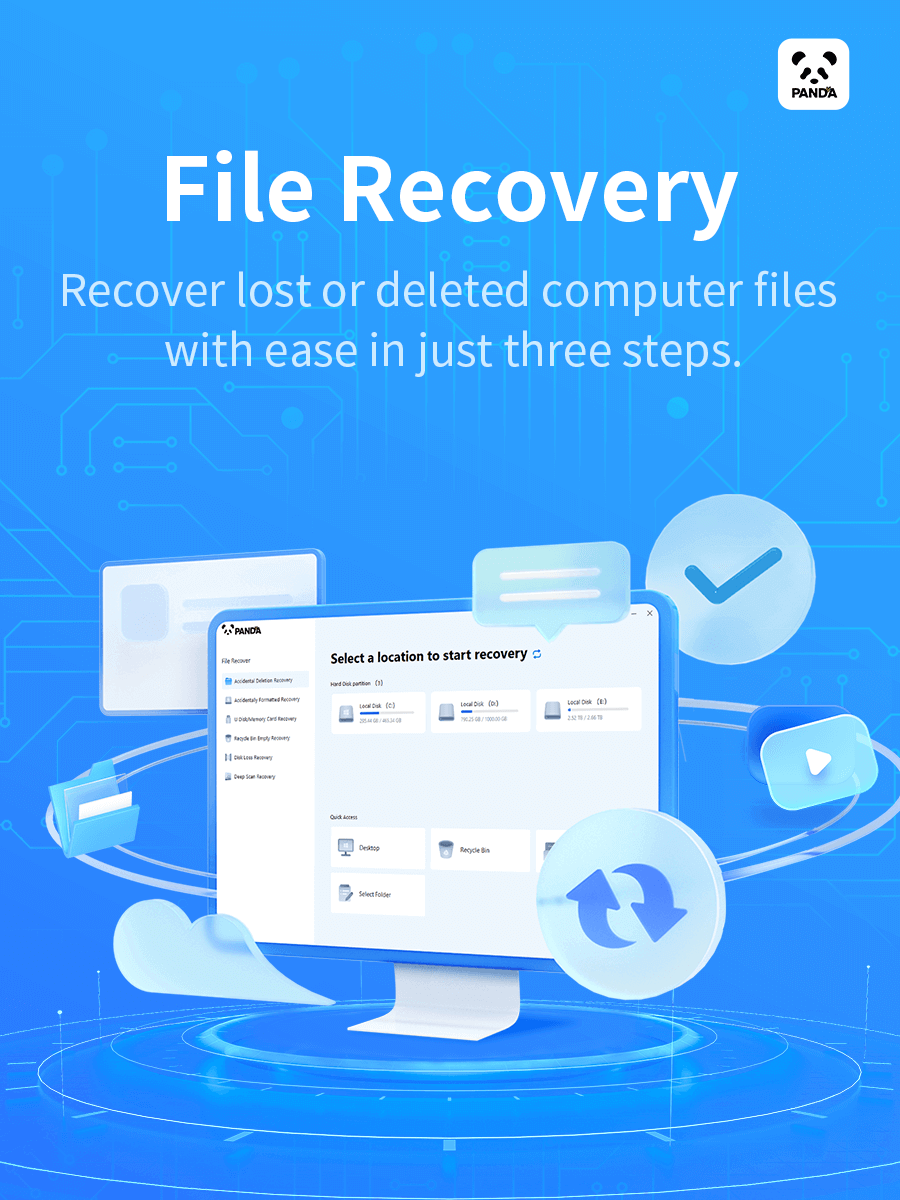Data loss is a frustrating and often distressing experience, especially when it involves important files, documents, or memories. The loss could occur without warning, and it can be the result of many different factors such as accidental deletion, corruption, hardware failure, or software errors. Whether you're dealing with a malfunctioning computer, an inaccessible external hard drive, or deleted files that you desperately need, understanding the correct recovery process can make all the difference.
Luckily, many data loss situations can be resolved using various tools and strategies. From file recovery software to professional data recovery services, there are multiple ways to address the issue. It’s important to act quickly and correctly to maximize the chances of a successful recovery.

Step 1: Assess the Situation
Before diving into any data recovery techniques, it's crucial to understand the nature of the problem. Whether the loss is due to accidental deletion, hardware failure, or some other issue, knowing what went wrong can help you decide the best course of action.
Identify the Cause of Data Loss
Understanding the reason for the data loss can help determine whether the data is recoverable and what methods you should use:
Accidental Deletion: Files were mistakenly removed from the system.
Corruption: Files became unreadable due to software or hardware issues.
Hardware Failure: A physical failure in a hard drive, SSD, or other storage devices.
Malicious Attacks: Ransomware or viruses that delete or lock files.
Overwritten Data: New data has replaced the old data, making recovery more difficult.
Check the Recycle Bin/Trash
For accidental deletion on a computer or external drive, the first thing you should do is check your system’s Recycle Bin or Trash. Many files may still be sitting there waiting to be restored. This is often the quickest and easiest way to recover lost data.
Stop Using the Affected Device
Whether you're dealing with a deleted file or a physical device failure, it’s vital to stop using the affected device immediately. If you continue to use the device, especially after accidental deletion, there’s a risk that new data will overwrite the deleted data, making recovery much harder.
Step 2: Try Built-In Recovery Options
If the device hasn’t suffered a complete hardware failure, there are several built-in recovery tools you can try, especially if the data loss is due to accidental deletion or corruption.
Windows File History (Backup)
Windows 10 and Windows 11 have a feature called File History, which allows users to restore previous versions of files or entire folders. If you had this feature enabled before the data loss, you can use it to restore your files.
Go to the Folder or File location.
Right-click and select Restore previous versions.
Choose a version of the file or folder before the data loss event.
Time Machine (for Mac Users)
For macOS users, Time Machine provides an easy way to restore lost files, provided it was set up and functioning before the loss occurred.
Open Time Machine from the Applications folder.
Navigate to the date and time before the data loss occurred.
Select the file or folder and click Restore.
Windows System Restore
If a system crash or software issue caused the data loss, you might be able to use System Restore to return your system to an earlier state.
Go to Control Panel > System and Security > System > System Protection.
Select System Restore and follow the prompts to select a restore point before the data loss.
Mac’s Disk Utility for Repairing Corrupted Drives
If the data loss is caused by file system corruption, macOS offers a built-in tool called Disk Utility. This tool can repair damaged disks or volumes and might help restore access to lost files.
Open Disk Utility.
Select the affected drive and click First Aid to attempt to repair it.
Step 3: Use Data Recovery Software
Wide Device Compatibility
Drecov Data Recovery supports a wide range of storage devices, including hard drives, SSDs, USB drives, SD cards, and external storage media. Whether you're dealing with internal storage or removable devices, Panda ensures compatibility with most devices and file systems.
Recovery from Various Scenarios
Drecov Data Recovery can recover files in several common data loss scenarios. These include:
Accidental deletion of files or folders.
Data loss due to corruption caused by system crashes or power outages.
Recovery from formatted or damaged partitions.
Retrieval from lost or inaccessible devices.
With advanced algorithms, Panda is capable of deep scans to recover even files that have been seemingly lost or overwritten.
Simple and Intuitive Interface
The software is designed with ease of use in mind, offering a simple and intuitive interface that even beginners can navigate with confidence. The step-by-step recovery process allows users to quickly find and restore their lost data without needing technical expertise.
Preview Files Before Recovery
Drecov Data Recovery allows users to preview recoverable files before restoring them. This feature helps ensure that you are recovering the right files, saving time and preventing unnecessary recovery processes.
Safe and Secure Recovery
Drecov Data Recovery performs non-destructive recovery, meaning that it doesn’t overwrite or modify your original data while scanning and restoring lost files. This ensures the safety of the data and increases the chances of a successful recovery.
Flexible File Recovery Options
The software allows you to recover different types of files, including documents, photos, videos, audio files, and more. You can choose to recover specific files or perform a full system recovery, depending on your needs.
Step 4: Use Professional Data Recovery Services
In cases where data recovery software isn’t successful, especially in cases of hardware failure or extreme file corruption, it might be necessary to turn to professional data recovery services.
When to Consider Professional Help
Professional recovery services are typically required in situations involving:
Severe Physical Damage: Crashed hard drives, broken SSDs, or devices that have suffered water or fire damage.
Data Corruption Beyond Software Repair: When no software-based solution can recover the files.
Complex Data Loss Events: Like RAID array failures, NAS problems, or multiple drive issues.
What to Expect from Professional Services
Professional services have specialized tools and cleanrooms to open and repair damaged drives. They often use advanced techniques to recover data that may be inaccessible using consumer-grade software.
Contact a reputable service provider and ask about their recovery success rates, turnaround time, and pricing.
Many companies offer a no-recovery, no-fee policy, meaning you only pay if the data is successfully recovered.
Prevent Future Data Loss
Once you have successfully recovered your data, take steps to prevent future data loss. Implement regular backup solutions, use cloud storage services, and keep your hardware in good condition.
Step 5: Backup and Prevention Strategies
Create Regular Backups
One of the most important ways to prevent future data loss is to back up your data regularly. Set up automated backups to external drives or cloud storage. Consider using the 3-2-1 backup rule:
3 copies of your data.
2 different types of storage media (e.g., external hard drive, cloud storage).
1 off-site backup (cloud storage or remote server).
Enable Cloud Storage Solutions
Services like Google Drive, Dropbox, OneDrive, and iCloud offer automated syncing and backup of important files. Cloud storage also provides off-site redundancy, ensuring that even if your primary device fails, your data remains safe.
Use File Versioning
Some cloud services and backup solutions offer file versioning, which automatically keeps older versions of your files. This is particularly useful for recovering from accidental overwriting or corruption.
Monitor Your Storage Devices
Keep an eye on the health of your hard drives, SSDs, and other storage devices. Many tools can help you monitor the status of your drives and alert you to potential failures before they happen.
Avoid Overwriting Important Files
If you accidentally delete important files, avoid using the device until you have completed a recovery process. Overwriting data is one of the most common reasons that data becomes unrecoverable.




